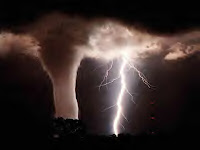Putting an ad in a small-town newspaper offering free fishing lures doesn’t seem like the begining of a $4.5 billion business. That’s how it panned out for Dick Cabela, the longtime Cabela’s (CAB) chairman who passed away yesterday at age 77.
Cabela’s is to hunting and fishing what Home Depot (HD) is to do-it-yourself home improvement—a platform that coalesces thousands of small-scale, niche suppliers. Cabela’s probably put plenty of independent retailers out of business along the way, but it also created a market much bigger than the sum of its parts.
Here’s a brief timeline of Cabela’s major milestones:
1961: Cabela buys 2,900 fishing flies and advertises them in newspapers
1963: Catalogue No. 1 goes out, with 55 pages
1969: A fall catalogue of hunting gear comes out, and annual sales top $1 million
1979: Annual sales top $10 million
1987: The first Cabela’s branded Visa card
1991: The Cabela’s first store opens
1998: Web sales start with Cabela’s online store
2004: Raises $156 million in an IPO
Today: Cabela’s sells $2.8 billion worth of goods a year at 48 stores and makes another $319 million in revenue from its financial services unit. It still mails more than 100 million catalogues a year.
Cabela was no doubt a sharp business man, but unlike retail magnates such as Amazon’s Jeff Bezos and Wal-Mart’s Sam Walton, he didn’t seem to have some distant, unwavering vision of world domination. That timeline attests that he slowly and cautiously steered the company and kept his customers coming back.
After eight years in business, Cabela was still working days in his father’s furniture store because he needed to “feed the kids.” The company waited almost three decades to open a retail store, and even then it called it a “showroom.”
What Cabela knew astonishingly well was his customers. He knew what they were looking for in a gun, a fly-fishing rod, a camouflage pattern, and a gear store. Even today, the company aims for “intense loyalty.” That’s not altogether rare, but Cabela seemed to understand passion for a product the way few executives do.
Here’s how he described it: “I’d rather go fishing than eat. Most of our customers are the same kind of people.”




